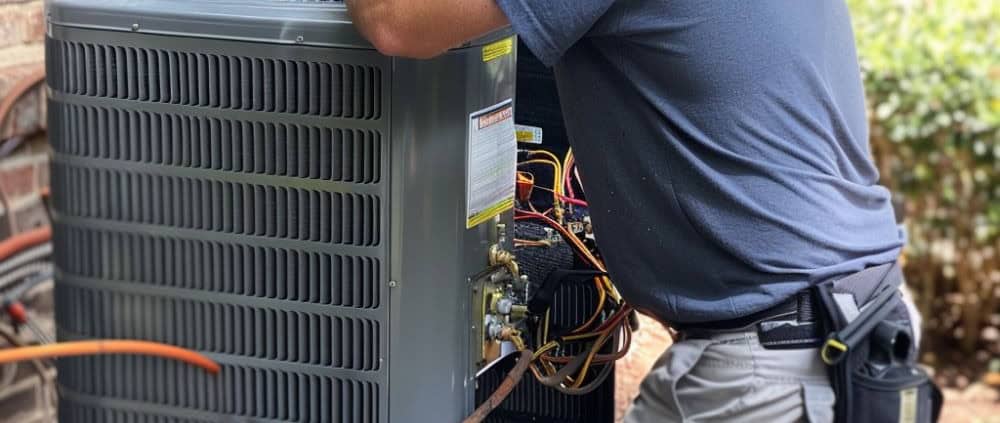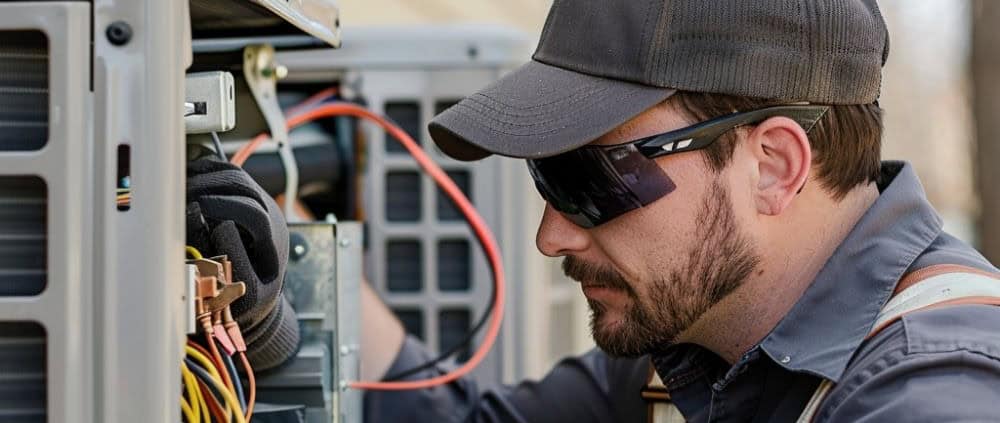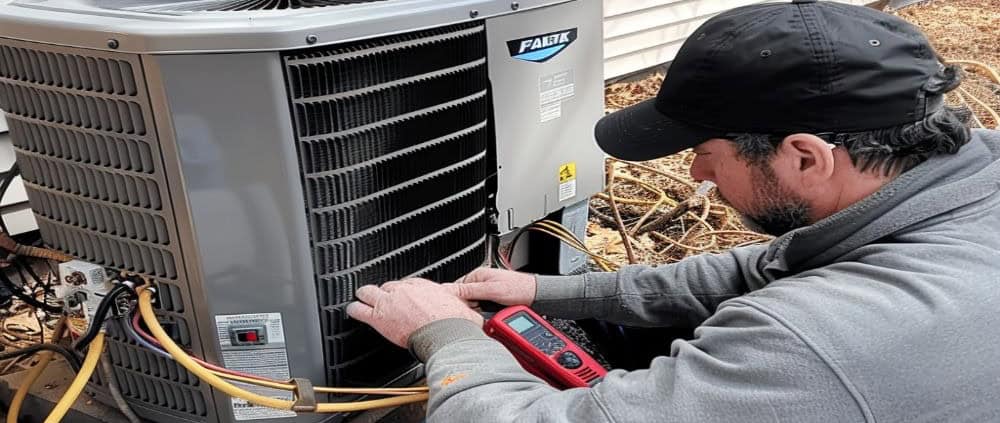How to Flush Your AC System for Optimal Performance
Introduction
Maintaining your vehicle’s air conditioning (AC) system is crucial for optimal performance and comfort, especially during the hot summer. One essential aspect of AC maintenance is flushing the system. In this article, we’ll delve into the importance of flushing your AC system and provide a comprehensive guide on how to do it effectively.
Understanding the AC System
Before diving into the flushing process, it’s essential to understand the components of your vehicle’s AC system. The primary components include the compressor, condenser, evaporator, expansion valve, and refrigerant lines. Each plays a vital role in the cooling process.
Signs That Your AC System Needs Flushing
Several indicators suggest that your AC system requires flushing. These include reduced cooling efficiency, unusual noises or smells emanating from the vents, and inconsistent airflow. Ignoring these signs can lead to further damage and costly repairs.
Importance of Flushing the AC System
Flushing the AC system is crucial for maintaining optimal performance and prolonging its lifespan. Flushing enhances the system’s efficiency and prevents potential malfunctions by removing contaminants such as debris, moisture, and old refrigerant.
Tools and Materials Required
Before starting the flushing process, gather the necessary tools and materials. These may include safety gloves, safety goggles, a flushing agent, refrigerant, a vacuum pump, and wrenches.
Step-by-Step Guide to Flushing the AC System
Preparation
Begin by ensuring that your vehicle is parked in a well-ventilated area. Put on safety gloves and goggles to protect yourself from harmful chemicals. Locate the AC system’s low-pressure service port and disconnect the battery’s negative terminal.
Disconnecting the Lines
Disconnect the refrigerant lines from the compressor, condenser, and evaporator using wrenches. Be cautious to avoid damaging the lines or components.
Flushing the System
Attach a flushing agent to the low-pressure service port and flush the system according to the manufacturer’s instructions. Ensure that all contaminants are thoroughly removed from the lines and components.
Reconnecting the Lines
Once the flushing process is complete, reconnect the refrigerant lines to the compressor, condenser, and evaporator. Tighten the connections securely to prevent leaks.
Adding Refrigerant
Using a vacuum pump, evacuate any air from the system. Then, add the appropriate amount of refrigerant to the AC system. Refer to your vehicle’s specifications for the correct refrigerant type and quantity.
Safety Precautions to Consider
When flushing your AC system, it’s essential to prioritize safety. Wear protective gear, including gloves and goggles, to shield yourself from harmful chemicals. Additionally, adequate ventilation in the work area should be ensured to prevent inhalation of fumes.
Common Mistakes to Avoid
While flushing your AC system, avoid common mistakes that could compromise its effectiveness. These include overlooking system leaks, using incorrect flushing agents, and neglecting to vacuum the system after flushing.
FAQs
How often should you flush your AC system?
The frequency of AC system flushing depends on various factors, including the vehicle’s age, usage, and environmental conditions. As a general rule, flushing is recommended every two to three years or when signs of contamination are evident.
Can I flush my AC system myself?
While it’s possible to flush your AC system yourself, having the necessary tools, materials, and expertise is essential. If you need clarification or are uncomfortable with the process, it’s best to seek professional assistance.
What flushing agent should I use?
Various flushing agents are available on the market, each designed for specific AC systems and contaminants. Choosing a flushing agent recommended by your vehicle’s manufacturer is crucial, and following the instructions carefully is vital.
Is it necessary to vacuum the system after flushing?
Yes, vacuuming the system after flushing removes any remaining moisture and air. This ensures optimal performance and prevents potential damage to the AC components.
How long does it take to flush an AC system?
The time required to flush an AC system can vary depending on the extent of contamination and the flushing method used. On average, the process can take anywhere from one to three hours.
Conclusion
Flushing your AC system is a crucial aspect of maintenance that ensures optimal performance and longevity. Following the steps outlined in this article and prioritizing safety, you can effectively flush your AC system and enjoy cool, comfortable rides for years.
How Much Does AC Cost Per Month
Introduction to AC Cost
Air conditioning is essential for maintaining comfort in hot climates, but it comes at a price. Understanding how much your AC costs per month is crucial for budgeting and managing your expenses effectively.
Factors Influencing AC Cost
Several factors influence the monthly cost of operating an air conditioning system. These include the size of the unit, its efficiency rating, geographical location, frequency of use, and maintenance expenses.
Average Cost of AC per Month
The average monthly cost of operating an air conditioner in the United States ranges from $50 to $200. However, this can vary significantly depending on various factors.
Calculating Monthly AC Cost
To calculate your monthly AC cost, you need to consider the following:
- Cost of Electricity: The primary expense associated with running an air conditioner is the cost of electricity.
- Size of AC Unit: Larger units typically consume more energy, leading to higher monthly expenses.
- Efficiency Rating: AC units with higher SEER (Seasonal Energy Efficiency Ratio) ratings are more energy-efficient and cost less.
- Geographical Location: Climate significantly determines how often you’ll need to run your AC, impacting your monthly expenses.
- Frequency of Use: The more frequently you use your AC, the higher your monthly expenses will be.
- Maintenance and Repair Costs: Regular maintenance can help keep your AC running efficiently and reduce the likelihood of costly repairs.
Cost of Electricity
Electricity costs vary depending on your location and the rate charged by your utility provider. In the United States, electricity costs around $0.13 to $0.20 per kWh.
Size of AC Unit
The size of your AC unit directly affects its energy consumption. A larger unit will cool your home faster but consume more energy, increasing monthly expenses.
Efficiency Rating
Efficiency ratings, such as SEER, indicate how efficiently an AC unit converts electricity into cooling. Higher SEER ratings mean lower energy consumption and, consequently, lower monthly expenses.
Geographical Location
The climate in your area determines how often you’ll need to run your AC. Hotter climates require more extensive air conditioning, leading to higher monthly expenses.
Frequency of Use
How often you use your AC significantly impacts your monthly expenses. Running your AC constantly will result in higher electricity bills than sparingly.
Maintenance and Repair Costs
Regular maintenance is essential for keeping your AC running smoothly and efficiently. Neglecting maintenance can decrease efficiency and costly repairs, increasing your monthly expenses.
Tips to Lower AC Costs
- Use a programmable thermostat to adjust temperatures automatically.
- Keep your home well-insulated to prevent cool air from escaping.
- Clean or replace air filters regularly to maintain airflow and efficiency.
- Schedule regular maintenance to keep your AC running efficiently.
- Consider investing in energy-efficient appliances to reduce energy consumption.
Investing in Energy-Efficient AC
While energy-efficient AC units may have a higher upfront cost, they can save you money in the long run by reducing your monthly expenses.
Alternative Cooling Options
Consider alternative cooling options such as ceiling fans, evaporative coolers, or portable AC units to reduce your AC costs.
Budgeting for AC Costs
Budgeting for AC costs is essential for managing your expenses effectively. Consider your monthly energy bills and set aside funds for maintenance and repairs.
Conclusion
Understanding how much your AC costs per month is crucial for budgeting and managing your expenses effectively. By considering size, efficiency, location, and usage, you can reduce monthly payments and ensure comfort without breaking the bank.
FAQs About AC Costs
- How can I reduce my AC costs?
- You can reduce AC costs by using a programmable thermostat, regularly maintaining your unit, and investing in energy-efficient appliances.
- What is the average monthly cost of running an AC?
- The average monthly cost of running an AC in the United States ranges from $50 to $200, depending on various factors.
- Do energy-efficient AC units save money?
- Yes, energy-efficient AC units can save you money in the long run by reducing your monthly energy bills.
- Should I repair or replace my old AC unit?
- If your old AC unit is inefficient and requires frequent repairs, replacing it with a newer, more energy-efficient model may be more cost-effective.
- Are there any government incentives for purchasing energy-efficient AC units?
- Some government incentives, such as tax credits and rebates, may be available for purchasing energy-efficient appliances. Check with your local utility provider or government agencies for more information.
How Long Do AC Capacitors Last?
AC capacitors play a crucial role in the functioning of air conditioning (AC) systems by storing and releasing electrical energy. But how long do they last? Let’s delve into the intricacies of AC capacitors to understand their lifespan and the factors affecting them.
Introduction to AC Capacitors
What are AC Capacitors?
AC or run capacitors are electrical components found in AC units. They store and release energy to help start and run the compressor and fan motors.
Importance of Capacitors in AC Units
Capacitors are essential for the smooth operation of AC systems. They provide the necessary jolt of electricity to start the motor and keep it running efficiently.
Functionality of AC Capacitors
AC capacitors work by storing and releasing electrical energy. There are two main types: start capacitors and run capacitors. Start capacitors provide the initial boost to start the motor, while run capacitors ensure the motor continues to run smoothly.
Factors Affecting the Lifespan of AC Capacitors
Several factors influence how long AC capacitors last:
Temperature Fluctuations
Extreme temperatures can affect the performance and lifespan of capacitors. High temperatures can cause them to degrade faster.
Electrical Stress
Frequent power surges or voltage fluctuations can stress capacitors, leading to premature failure.
Age of the Capacitor
As with any electronic component, the age of the capacitor can impact its performance and longevity.
Quality of Manufacturing
The quality of the capacitor and its components can significantly affect how long it lasts. Cheaply-made capacitors may fail sooner than higher-quality ones.
Average Lifespan of AC Capacitors
On average, AC capacitors can last anywhere from 10 to 15 years. However, this lifespan can vary depending on several factors, including usage, environmental conditions, and maintenance.
Signs of a Failing AC Capacitor
It’s essential to be aware of the signs indicating a failing capacitor:
- Weak or no airflow: If you notice reduced airflow from your AC vents, it could be due to a failing capacitor.
- Trouble starting: Difficulty starting the AC unit or frequent cycling on and off may indicate capacitor issues.
- Strange noises: Unusual sounds from the AC unit, such as buzzing or humming, can signal capacitor problems.
Preventive Maintenance for Prolonging Capacitor Lifespan
Regular maintenance is critical to prolonging the lifespan of AC capacitors:
- Keep the unit clean: Regularly remove debris from the AC unit to prevent overheating.
- Schedule professional inspections: Regular maintenance by a qualified technician can help identify and address potential issues before they escalate.
Replacing AC Capacitors
When it’s time to replace a faulty capacitor, it’s essential to do so promptly and correctly:
- DIY vs. Professional Replacement: While some homeowners may attempt to replace capacitors themselves, hiring a professional is generally recommended to ensure proper installation and safety.
- Cost Considerations: The cost of replacing a capacitor can vary depending on factors such as the type of capacitor and labour costs.
- Use Compatible Capacitors: When replacing a capacitor, it’s crucial to use one compatible with your AC unit to ensure optimal performance and longevity.
Conclusion
AC capacitors are vital components of air conditioning systems, crucial in starting and running the compressor and fan motors. Understanding the factors that affect their lifespan and knowing the signs of a failing capacitor can help homeowners maintain their AC units and ensure efficient operation for years.
FAQs (Frequently Asked Questions)
- How do I know if my AC capacitor could be better?
- Look for signs such as weak airflow, trouble starting the unit, and unusual noises from the AC system.
- Can I replace the capacitor myself?
- While some may attempt DIY replacement, hiring a professional for safety and proper installation is generally recommended.
- How often should AC capacitors be replaced?
- AC capacitors typically last around 10 to 15 years, but regular maintenance can help prolong their lifespan.
- What happens if a capacitor fails?
- A failed capacitor can cause the AC unit to struggle to start, reduce cooling efficiency, and potentially lead to other system malfunctions.
- Is regular maintenance necessary for AC capacitors?
- Yes, regular maintenance, including cleaning and professional inspections, is crucial for ensuring AC capacitors’ optimal performance and longevity.




